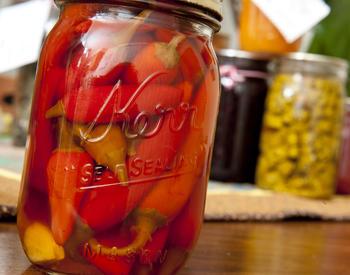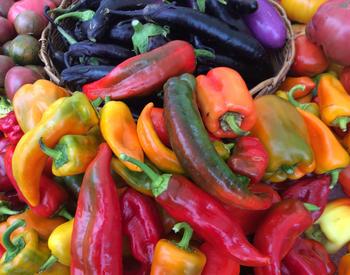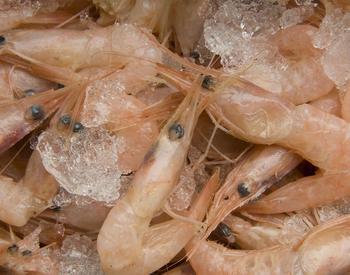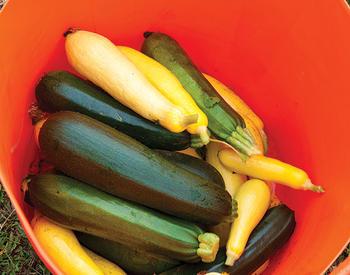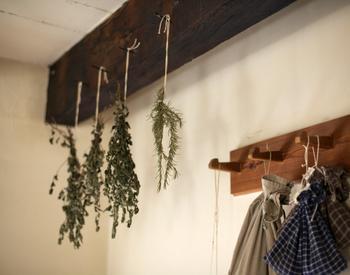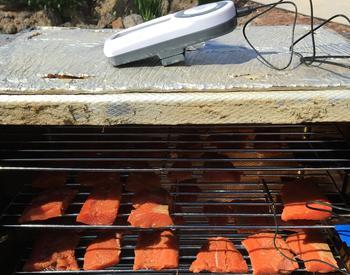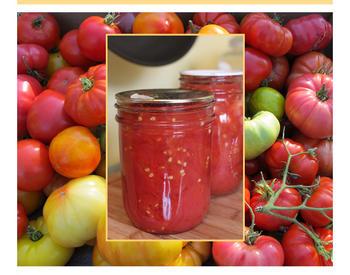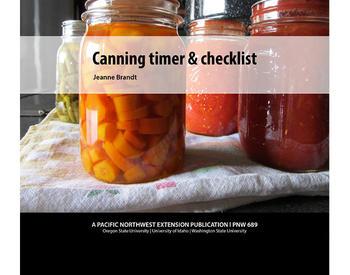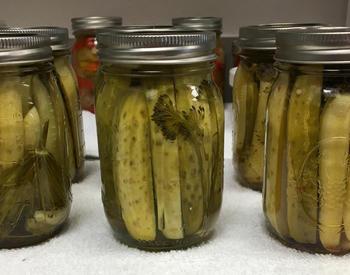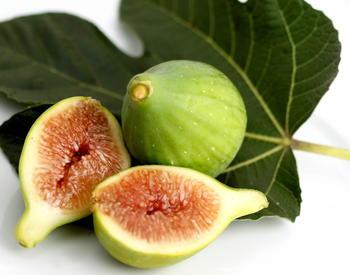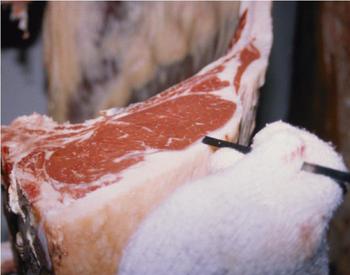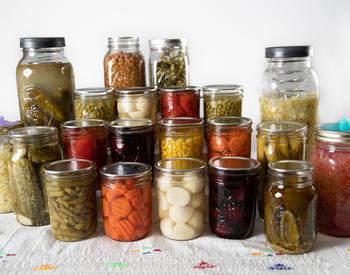Download this publication as a PDF
The terms “plums” and “prunes” are used interchangeably. A prune is a plum that can satisfactorily be dried.
There are two main types of plums: European and Oriental. The Oriental plums are generally clingstone and best for eating fresh, made into plum sauce, juice, jams and jellies. The European plums are freestone and are suitable for eating fresh, drying and canning.
Some good varieties for jellies and jams are Santa Rosa, Satsuma, Methley, flowering Japanese plums and wild plum. For canning, choose Early Italian, Parsons, yellow egg, Italian, green gage or Brooks. For drying, Italian, Brooks and green gage are excellent.
Canning
Plums may be scalded and peeled, but are usually canned unpeeled. To can whole, wash and prick skins on two sides with a fork to prevent splitting. Freestone varieties may be halved and pitted.
Plums and prunes may be canned in sugar syrup, juice (such as apple or grape) or water. Those canned in syrup hold their shape better. For a 9‑pint load, use the following proportions:
|
Type of syrup |
Cups water |
Cups sugar |
|
Very light |
6 ½ |
¾ |
|
Light |
5 ¾ |
1 ½ |
|
Medium |
5 ¼ |
2 ½ |
|
Heavy |
5 |
3 ¼ |
Plums and prunes must be processed in a boiling water bath. Ask your county Extension office for time and adjustments if you live above 1,000 feet. See either the hot or raw pack method:
Hot pack
Heat plums and prunes in boiling syrup or juice. Boil 2 minutes. Cover saucepan and let sit 20–30 minutes. Pack hot into jars and cover with boiling syrup, leaving ½ inch headspace.
Raw pack
Pack raw plums into jars. Cover with boiling syrup or juice to within 1/2 inch of the top. Remove air bubbles. Wipe rims and adjust lids.
Process pints for 20 minutes and quarts 25 minutes in a boiling water canner. After processing, take canner off heat. Remove lid and wait 5 minutes before removing jars.
Freezing
Select firm, ripe fruit. Wash, halve and pit. Plums can be frozen in a sugar pack (using 5 parts fruit with 1 part sugar) or syrup pack (using a 50% syrup) or frozen whole with no added sugar or syrup. Plums and prunes can also be cooked in a sugar syrup before freezing to make a sauce.
Place a piece of crumbled plastic wrap on top of fruit to hold it under the liquid when freezing in containers.
Drying
Most plums and prunes dry very well. Select fully mature, fresh, sweet fruit, free from soft spots and blemishes.
Wash and cut in half. Press to flatten fruit. Halves can be steam blanched for 1–2 minutes to hasten drying. Dry at 130o–135oF until pliable with no pockets of moisture.
Dried prunes are great eaten as snacks or used in breads, fillings, salads and fruit soups.
James, jellies, sauces
Plums can be made into excellent jams, jellies and preserves. There are many excellent recipes in pectin packages and home canning books.
Plum Sauce
- 4 pounds plums, pitted and chopped
- 1 cup cider vinegar
- 1 cup white sugar
- 2 cups brown sugar
- 1 inch piece fresh ginger, minced
- 2 tbsp. chopped green chili peppers
- ¾ cup chopped onion (about 1 medium)
- 1 clove garlic
- 2 tbsp. mustard seed
- 1 tbsp. salt
Combine vinegar, sugars, and seasonings. Bring to a boil. Reduce heat and add chopped plums. Cook until thick and syrupy, about 1½ hours. Pour into hot jars, leaving ¼ inch headspace. Adjust caps and process 20 minutes in a boiling water canner. After processing, take canner off heat. Remove lid and wait 5 minutes before removing jars. Yield 4 pints.
Source: Ball Blue Book
Note: When cutting or seeding hot peppers, wear rubber gloves to prevent hands from being burned.
Source: OSU Master Food Preserver Program
2012 Oregon State University. OSU Extension Service cooperating. OSU Extension Service offers educational programs, activities, and materials without discrimination based on race, color, religion, sex, sexual orientation, national origin, age, marital status, disability, or disabled veteran or Vietnam-era veteran status. OSU Extension Service is an Equal Opportunity Employer.
